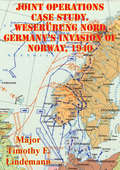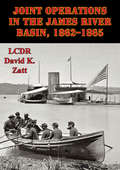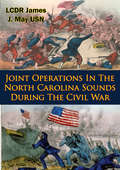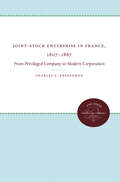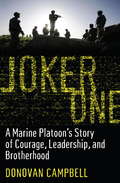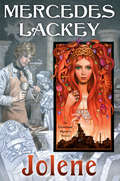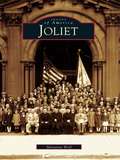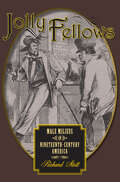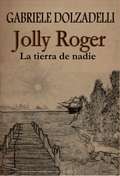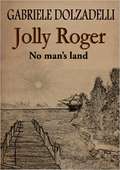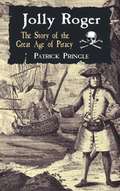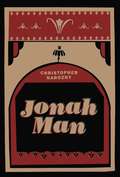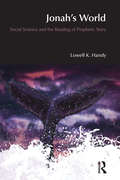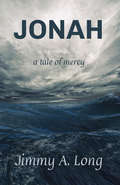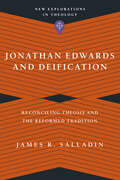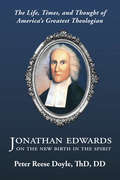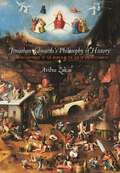- Table View
- List View
Joint Operations Case Study. Weserübung Nord Germany's Invasion Of Norway, 1940
by Major Timothy F. LindemannIn the history of modern warfare, Weserübung Nord, the German invasion of Norway in 1940, occupies a distinguished station as the first campaign “jointly” planned and executed by ground, sea, and air forces. This paper examines the origins, concept, and planning of Weserübung Nord, as well as the execution of the landings. Brief attention is given to the defense of the landings against Allied counterstrokes and to issues associated with unified planning and direction. The origins of the campaign are found in the German naval experience in the First World War, interwar naval strategy debates, and the persona of Grand Admiral Erich Raeder, who was determined to secure a decisive role for the German Navy in the Second World War. Raeder capitalized on the fortuitous opportunities the Russo-Finnish War and the Norwegian traitor Vidkun Quisling presented to win Hitler over to his naval plans. Raeder and the Navy heavily influenced the concept development and planning of the campaign in concert with the High Command of the (German) Armed Forces, which also had a vested organizational interest in a military solution of the Norwegian issue. In executing Weserübung Nord, the German Armed Forces encountered major problems only at Oslo and Narvik. However, the operational-level success of the campaign tends to draw attention away from fundamental problems regarding unified planning and direction which emerged during the preparation and execution of the campaign.“When the first [German] mountain troops in parachutes were dropped behind Narvik, it occurred that one fell directly in the water. The General [Dietl] came up to him as a petty officer was pulling him out of the water.”“So soldier, how do you end up here?”“With the help of the three branches of the Armed Forces, Herr General,” shouted the man quick-wittedly, “the Army sent me up here, the Air Force transported me, and the Navy pulled me out of the water.”-General Dietl: das Leben eines Soldaten
Joint Operations In The James River Basin, 1862–1865
by LCDR David K. ZattThis study is an analysis of Union joint operations in the James River Basin from 1862 to 1865. Specifically the contributions made by the Union Navy during the battles of this period.It begins with an analysis of the Peninsula Campaign conducted by Major General George B. McClellan and Rear Admiral Louis M. Goldsborough in 1862 and concludes with the Union forces entry into Richmond in April 1865.The Union Navy played a significant role in shaping the outcome of the battles for control of the James River Basin and the eventual capture of Richmond. The Navy's control of the river allowed Lieutenant General Grant to maintain his main supply base well forward in the theater. This enabled Grant to rapidly maneuver and resupply his forces.The study provides lessons on the difficulties of joint operations and the requirements to ensure success in the joint arena. Furthermore, it provides today's United States military with a view of riverine and mine warfare operations and the implication of allowing these warfare areas to decay.
Joint Operations In The North Carolina Sounds During The Civil War
by LCDR James J. May USNThis study is a historical analysis of Union joint operations that occurred during the American Civil War in northeastern North Carolina. The study begins with a historical overview of joint operations then transitions into the events that occurred in northeastern North Carolina between February 1862 and June 1865.Joint operations in the sounds began with the assault of Roanoke Island in February 1862. This study documents the Roanoke Island operation and the missions that supported the capture of New Bern, Plymouth and Washington, North Carolina during 1862. Specific emphasis is placed on the difficulties encountered conducting joint riverine warfare in the restricted waters of North Carolina without the benefit of a unified commander.Although the concept of a unified commander was not utilized in the sounds of North Carolina, this study documents the maturation of the joint relationship that did exist. It further displays how the joint forces overcame the challenges of communications and both natural and manmade obstacles. Overall, this study shows how success in the waters of northeastern North Carolina was dependent on a joint effort but could have been more successful had a unified commander been appointed. Conclusions include present day application and considerations.
Joint Stock Banking in Germany: A Study of the German Creditbanks Before and After the War (Routledge Library Editions: The German Economy #13)
by P Barrett WhaleThis classic study of German creditbanks was first published in 1930 and even now deserves its place as a fundamental text on banking in Germany. It is a valuable comparative study of one important type of financial institution and represents a detailed survey of Joint Stock Banking in Germany in the pre-war, war and post-war periods upt o 1928.
Joint Ventures in the People's Republic of China: The Control of Foreign Direct Investment under Socialism
by Margaret M. PearsonWhen Chinese leaders announced in late 1978 that China would "open to the outside world," they embarked on a strategy for attracting private foreign capital to spur economic development. At the same time, they were concerned about possible negative repercussions of this policy. Margaret Pearson examines government efforts to control the terms of foreign investment between 1979 and 1988 and, more broadly, the abilities of socialist states in general to establish the terms of their own participation in the world economy. Drawing on interviews with Chinese and foreigners involved in joint ventures, Pearson focuses on the years from 1979 through 1988, but she also comments on the fate of the "open" policy following the economic retrenchment and political upheavals of the late 1980s. "Since the policy of `opening' was launched in Beijing in 1979 some Chinese leaders have favoured foreign investment, while others have feared that it would carry ideas and institutions that would corrupt Chinese socialism. This study of Chinese policies toward foreign-invested enterprises (FIFs) during the 1980s broadly charts significant changes in the impact of these competing views on policy. . . . Pearson's overview and analysis provide thought-provoking perspectives. . . . Pearson furnishes excellent evidence that throughout the 1980s the pressure for reform was so great that the conservatives had to retreat repeatedly, despite their concerns about the decline of collectivist values and the Maoist dream."--Stanley Lubman, The China Quarterly
Joint-Stock Enterprise in France, 1807-1867: From Privileged Company to Modern Corporation
by Charles E. FreedemanIntegrating politics, economics, and law, Freedman traces the origin, development, and the role of joint-stock companies in France from the prerevolutionary Old Regime to the reorganization of the corporation under the legislation of 1867. He focuses on two types of companies, the societe anonyme and the societe en commandite par actions, to show that French corporate law was as liberal as any in Europe and should be regarded as a positive contributor to French economic growth.Originally published 1979.A UNC Press Enduring Edition -- UNC Press Enduring Editions use the latest in digital technology to make available again books from our distinguished backlist that were previously out of print. These editions are published unaltered from the original, and are presented in affordable paperback formats, bringing readers both historical and cultural value.
Joker One: A Marine Platoon's Story of Courage, Leadership, and Brotherhood
by Donovan CampbellAfter graduating from Princeton, Donovan Campbell wanted to give back to his country, engage in the world, and learn to lead. So he joined the service, becoming a commander of a forty-man infantry platoon called Joker One. Campbell had just months to train and transform a ragtag group of brand-new Marines into a first-rate cohesive fighting unit, men who would become his family. They were assigned to Ramadi, the capital of the Sunni-dominated Anbar province that was an explosion just waiting to happen. And when it did happen--with the chilling cries of "Jihad, Jihad, Jihad!" echoing from minaret to minaret--Campbell and company were there to protect the innocent, battle the insurgents, and pick up the pieces. Thrillingly told by the man who led the unit of hard-pressed Marines, Joker One is a gripping tale of a leadership and loyalty.
Jolene (Elemental Masters #15)
by Mercedes LackeyThe beloved Elemental Masters series moves to America for the first time in a rich retelling of The Queen of the Copper Mountain, set against the backdrop of Tennessee coal country.Anna May Jones is the daughter of a coal miner, but a sickly constitution has kept her confined to the house for most of her life. Hoping to improve her daughter&’s health—and lessen the burden on their family—Anna's mother sends her to live with her Aunt Jinny, a witchy-woman and an Elemental Master, in a holler outside of Ducktown. As she settles into her new life, Anna learns new skills at Aunt Jinny&’s side and discovers that she, too, has a gift for Elemental magic that Jinny calls &“the Glory&”. She also receives lessons from a mysterious and bewitching woman named Jolene, who assures her that, with time, Anna could become even more powerful than her aunt. But with Anna&’s increasing power comes increasing notice. Billie McDaran, the foreman of the Ducktown mine, begins to take an interest in Anna and her abilities—even though Anna has already fallen in love with a young man with a talent for stonecarving. If she wants to preserve the life she has come to love, Anna must use her newfound powers to oppose the foreman and protect those around her.
Joliet
by David A. BeldenIn 1673, Louis Jolliet and Fr. Jacques Marquette were the first Europeans to explore the Mississippi and the Illinois River valleys. Their explorations took them through what is now Joliet. Founded in 1834 as Juliet, the settlement's future was shaped by several important developments. The Des Plaines River provided an early waterway, and its power gave rise to mills and manufacturing. Native limestone rock beds helped build a 19th-century city, while Joliet quarries employed thousands of men. From the opening of the Illinois and Michigan Canal in 1848, to the building of the Illinois Central and Rock Island Railroads in the 1850s, to the intersecting of the Lincoln Highway and Route 66 in the 20th century, Joliet became an important hub between rural towns in Will and Grundy Counties and Chicago. Over 200 vintage postcards of Joliet reveal a unique city with a sense of community pride.
Joliet (Images of America)
by Marianne WolfJoliet once was a lush prairie bordered with scenic bluffs along the Des Plaines River. In the late 19th century, settlers and a large influx of Eastern European immigrants arrived, transforming the area into a bustling industrial community of steel, limestone, manufacturing, and transportation. In the 20th century, Joliet transformed itself from an industrial hub to a destination of entertainment and tourism. Tourism thrives as people visit the National Hot Rod Association drag strip, NASCAR track, two casinos, the JackHammers minor-league baseball team and baseball stadium, a water park, the historical museum, and library. Joliet depicts the rich cultural heritage impressed on the city and shows how the people lived and worked together, earning Joliet the title of All-American City in 1955 by the National Municipal League and Look magazine.
Jolliet and Marquette: A New History of the 1673 Expedition
by Mark WalczynskiOften viewed in isolation, the Jolliet and Marquette expedition in fact took place against a sprawling backdrop that encompassed everything from ancient Native American cities to French colonial machinations. Mark Walczynski draws on a wealth of original research to place the explorers and their journey within seventeenth-century North America. His account takes readers among the region’s diverse Native American peoples and into a vanished natural world of treacherous waterways and native flora and fauna. Walczynski also charts the little-known exploits of the French-Canadian officials, explorers, traders, soldiers, and missionaries who created the political and religious environment that formed Jolliet and Marquette and shaped European colonization of the heartland. A multifaceted voyage into the past, Jolliet and Marquette expands and updates the oft-told story of a pivotal event in American history.
Jolly Fellows: Male Milieus in Nineteenth-Century America (Gender Relations in the American Experience)
by Richard Stott"Jolly fellows," a term that gained currency in the nineteenth century, referred to those men whose more colorful antics included brawling, heavy drinking, gambling, and playing pranks. Reforms, especially the temperance movement, stigmatized such behavior, but pockets of jolly fellowship continued to flourish throughout the country. Richard Stott scrutinizes and analyzes this behavior to appreciate its origins and meaning. Stott finds that male behavior could be strikingly similar in diverse locales, from taverns and boardinghouses to college campuses and sporting events. He explores the permissive attitudes that thrived in such male domains as the streets of New York City, California during the gold rush, and the Pennsylvania oil fields, arguing that such places had an important influence on American society and culture. Stott recounts how the cattle and mining towns of the American West emerged as centers of resistance to Victorian propriety. It was here that unrestrained male behavior lasted the longest, before being replaced with a new convention that equated manliness with sobriety and self-control.Even as the number of jolly fellows dwindled, jolly themes flowed into American popular culture through minstrelsy, dime novels, and comic strips. Jolly Fellows proposes a new interpretation of nineteenth-century American culture and society and will inform future work on masculinity during this period.
Jolly Roger - La tierra de nadie - Volumen I
by Gabriele Dolzadelli Laura Faccio1670. En un clima de enfrentamientos por la colonización del Nuevo Mundo y por la supremacía comercial, Sidvester O’Neill, un joven irlandés viaja por el Mar Caribe con destino a la isla de Puerto Dorado. El objetivo, encontrar a su hermano Alexander, quien había partido un año antes, y regresar con él a Irlanda. Pero el viaje tomará un giro inesperado. En la oscuridad de la selva de la pequeña isla, se encuentra un secreto oculto que las grandes potencias europeas (Francia, Inglaterra y Holanda) aspiran poseer. Intriga, engaño y conspiraciones que acompañan los días en Puerto Dorado, en una lucha de poder entre los capitanes más astutos de la isla. Todo bajo la atenta mirada de un barco pirata anclado en el horizonte, frente a la pequeña tierra de todos y de nadie.
Jolly Roger Volume 1: No Man's Land
by Gabriele Dolzadelli Alexander Powell and Silvana Borghi1670. Among fights for the New World colonization and the commercial supremacy, a young Irishman named Sidvester O'Neill sets off for the Caribbean Sea heading to the isle of Puerto Dorado. He aims to find his brother Alexander, who left years before, and take him back home. But his journey will have unexpected implications. A secret hides in the darkness of the island's jungle, and the main European powers (France, England and Holland) yearn for it. Intrigues, deceits and plots pack Puerto Dorado's days, in a fight between the smartes captains in the island. As these events occur, the alert eye of a pirate ship anchored on the horizon is keeping an eye on them, in front of everyone's and no man's tiny land.
Jolly Roger: The Story Of The Great Age Of Piracy (Dover Maritime Series)
by Patrick PringleWhile history has painted most pirates as "abominable brutes," capable of the worst cruelties and driven by insatiable greed, the author of this fascinating study insists that pirates have suffered more than their share of bad press, mainly from popularizing writers trying to sell books. He notes, for example, that Henry Morgan always carried privateering commissions signed by the governor of Jamaica, and that many pirates bought commissions (and pardons) from governors of the American colonies.With this in mind, Mr. Pringle tries to separate fact from fiction in chronicling the activities of the infamous men and women who sailed under the black flag during the great age of piracy. Beginning with Sir Francis Drake, the "Father of Modern Piracy," he examines the lives and deeds of such outlaws as Morgan, Captain Kidd, Blackbeard, Anne Bonney, and Mary Read, as well as a raft of lesser-known scoundrels, finding, for the most part, that the myths about these maritime marauders are largely overblown.Pirates, for example, never made their prisoners walk the plank. This was a nineteenth-century fiction with no basis in reality. Moreover, the atrocities pirates are accused of, if true, were no worse, and sometimes not nearly as bad, as the horrific punishments (brandings, drawing and quartering, burning alive, etc.), meted out by legitimate governments of the age.In short, while piracy undoubtedly was a fact of life in the seventeenth and eighteenth centuries, the reality was far less brutal and blood-soaked than the sensationalizing writers of the time and of a later day would have us believe. The true state of affairs is unfolded in this engrossing, impeccably accurate history, sure to delight any armchair sailor, maritime historian or old salt with its balanced, highly readable study of the seagoing brigands who sailed under the Jolly Roger.
Jonah Man
by Christopher NaroznySet in vaudeville in the early twentieth century, Jonah Man is a gripping and ultimately heartbreaking novel that reveals the often tragic lives of performers struggling to make it to the big time.Told from the perspectives of multiple characters, including a one-handed juggler who moonlights as a drug trafficker, a talented young boy who longs to escape the shadow of his abusive father, and a police inspector whose bumbling attempts to solve a murder result in a series of calamitous missteps, Jonah Man explores the dark side of life behind the curtain, where performers will resort to the most extreme measures-including drug dealing, self-mutilation, and even murder-to keep their ever shrinking dream of becoming a star alive. Resurrecting the lost language and world of vaudeville-a "Jonah Man" was a performer who, despite his best efforts, had stalled in his career-Jonah Man is an unforgettable portrait of people trapped between their highest hopes and the crushing realties of their lives. Christopher Narozny earned an MFA in fiction from Syracuse University and a PhD in creative writing and literature from the University of Denver. His fiction has appeared or is forthcoming in the American Literary Review, Denver Quarterly, Marginalia, elimae, and Hobart. While at Syracuse he won the Peter Neagoe Prize for Fiction, and at the University of Denver he was awarded the Frankel Dissertation Fellowship for an earlier draft of Jonah Man. He currently lives in Brooklyn, New York.
Jonah's World: Social Science and the Reading of Prophetic Story (BibleWorld)
by Lowell K. HandyThe story of Jonah, often read as a simple children's story, is a multifaceted and elaborate narrative with serious intent. Treating the biblical book as a fictitious story based on real locations and recognizable persons, 'Jonah's World' examines the background to the story and draws on social science approaches to describe its imaginative world. The book explores the geography, theology, myth, human characters, natural landscape, and the ideology behind the story to uncover a vision of reality shaped by literary technique. Jonah's World will be invaluable to students and scholars seeking a new approach to the reading of this colourful text.
Jonah: A Tale of Mercy
by Jimmy A. LongThe story of Jonah is ancient and often told, but even so, most remember it only as the tale of a prophet eaten by a fish. In Jonah: A Story of Mercy, author Jimmy A. Long presents the biblical story of Jonah with historical details of the time while weaving fictional characters and events that present the prophet as a real man fighting the call of God on his life. Beginning prior to his call to Nineveh, we follow Jonah as he runs from God, reluctantly obeys God, and is amazed and even angered at the mercy of God. In the process, we learn as much about ourselves as we do the prophet.
Jonas, el marido que no podía volver a desposarse (Trilogía Ducado de Mildre #Volumen 2)
by Verónica MengualSegunda entrega de la trilogía «Ducado de Mildre». Un romance de época. Una mujer irresistible. ¿Valdrá la pena arriesgarlo todo por ella? El duque de Mildre ha estado pensando en la institutriz de su hija y reprimiendo sus impulsos desde que ella se presentó en su casa hace unos años. Su interés en la mujer es tal que le lleva a pedir cosas descabelladas sobre su hija, incluso que tosa de forma elegante. No consigue alejarla de su mente ni por las noches ni por el día y está harto de imaginar situaciones solo en su cabeza. Y no puede desposarla porque está casado... La señorita Moira Milles está cansada de ese rarito duque que pide tonterías a su hija. Y aun así, no puede evitar que él despierte ciertas sensaciones y sentimientos en ella. Una mujer mundana dispuesta a hacer lo que se le antoja... ¿Logrará Jonas vivir la felicidad del cuento de hadas?
Jonathan Edwards and Deification: Reconciling Theosis and the Reformed Tradition (New Explorations in Theology)
by James R. SalladinThe doctrine of deification or theosis is typically associated with the Eastern Orthodox tradition. Indeed, the language of participation in the divine nature as a way to understand salvation often sounds like strange music in the ears of Western Christians despite passages like 2 Peter 1:4 where it appears. However, recent scholarship has argued that the theologies of some of the most prominent figures in the history of the Western church, including Martin Luther, John Calvin, and John Wesley, share more in common with deification than has been acknowledged. In this volume of IVP Academic's New Explorations in Theology series, theologian James Salladin considers the role of deification in the theology of another well-known Western theologian: Jonathan Edwards. In addition, he reflects upon the question of how Edwards's soteriology compares with the rest of the broader Reformed tradition. Here, we discover how Edwards's theology affirms what it means for sinners to be brought into the hands of a loving God.
Jonathan Edwards on the New Birth in the Spirit: The Life, Times, and Thought of America’s Greatest Theologian
by Brandon J. B20 Cozart Peter Reese DoyleBiblical truth in the hands of Edwards lives mightily. Edwards in the hand of Peter Doyle comes alive. As we see an anemic Christendom today in its witness, ethics, and influence, we find the correctives and the guidance we need in the works of Jonathan Edwards––revivalist preacher, philosopher, and theologian. In this insightful book, former pastor and missionary Peter Doyle presents Edwards’ theology in a comprehensive scope: in its cultural context, against its adversaries, and with all its practical and pastoral implications. Doyle paints for readers a clear picture of how Edwards understands the ‘new birth.’ A cursory treatment of being born again this is not. The great revivals under Edwards’ preaching gave to the converts a sense of the glory of God, their own sinfulness, and a humility before the sacrifice of Christ for their sin.
Jonathan Edwards's Philosophy of History: The Reenchantment of the World in the Age of Enlightenment
by Avihu ZakaiAvihu Zakai analyzes Jonathan Edwards's redemptive mode of historical thought in the context of the Enlightenment. As theologian and philosopher, Edwards has long been a towering figure in American intellectual history. Nevertheless, and despite Edwards's intense engagement with the nature of time and the meaning of history, there has been no serious attempt to explore his philosophy of history. Offering the first such exploration, Zakai considers Edwards's historical thought as a reaction, in part, to the varieties of Enlightenment historical narratives and their growing disregard for theistic considerations. Zakai analyzes the ideological origins of Edwards's insistence that the process of history depends solely on God's redemptive activity in time as manifested in a series of revivals throughout history, reading this doctrine as an answer to the threat posed to the Christian theological teleology of history by the early modern emergence of a secular conception of history and the modern legitimation of historical time. In response to the Enlightenment refashioning of secular, historical time and its growing emphasis on human agency, Edwards strove to re-establish God's preeminence within the order of time. Against the de-Christianization of history and removal of divine power from the historical process, he sought to re-enthrone God as the author and lord of history--and thus to re-enchant the historical world. Placing Edwards's historical thought in its broadest context, this book will be welcomed by those who study early modern history, American history, or religious culture and experience in America.
Jonathan Edwards: An Introduction to His Thought
by Oliver D. Crisp Kyle C. StrobelStudent-friendly intro to one of America&’s most fascinating theological minds Jonathan Edwards (1703–1758) has long been recognized as one of the preeminent thinkers in the early Enlightenment and a major figure in the history of American Christianity. In this accessible one-volume text, leading Edwards experts Oliver Crisp and Kyle Strobel introduce readers to the fascinating and formidable mind of Jonathan Edwards as they survey key theological and philosophical themes in his thought, including his doctrine of the Trinity, his philosophical theology of God and creation, and his understanding of the atonement and salvation. More than two centuries after his death, theologians and historians alike are finding the larger-than-life Edwards more interesting than ever. Crisp and Strobel&’s concise yet comprehensive guide will help students of this influential eighteenth-century revivalist preacher to understand why.
